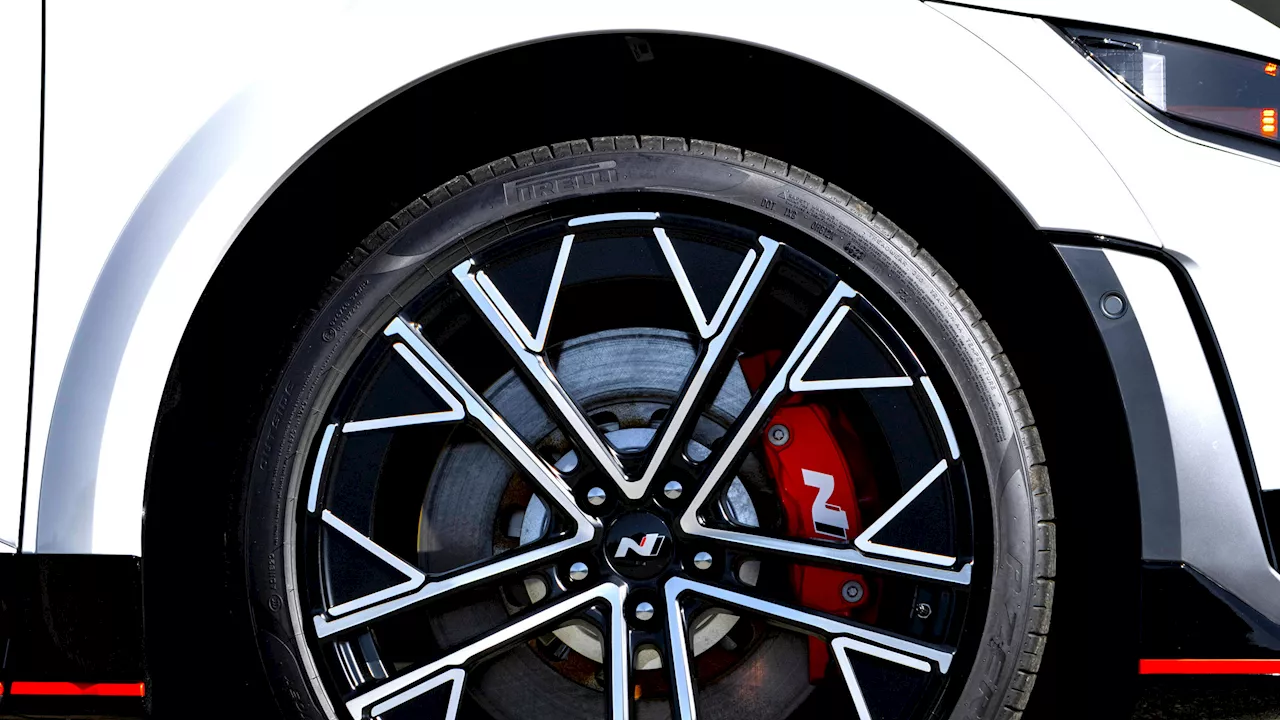Owners of the Hyundai Ioniq 5 and Ioniq 5 N are facing challenges when attempting to replace rear brake pads, as the process requires specialized software and tools. This situation has raised concerns among right-to-repair advocates, who argue that such restrictions limit vehicle owners’ maintenance rights and hinder self-reliance.
A recent incident involving a Hyundai Ioniq 5 N owner highlighted these issues. The owner, who drove his electric vehicle (EV) vigorously on the track, discovered that replacing the rear brake pads was not a straightforward task. To safely change the pads, he needed to retract the electronic parking brake, a step that necessitated the use of Hyundai’s Global Diagnostic System (GDS) or the J2534 Diagnostic Tool.
Costly Tools and Access Restrictions
The GDS, which enables the retraction of the brake calipers, comes with a hefty price tag of nearly $6,000. Alternatively, the J2534 Diagnostic Tool, which is supported by Hyundai, costs approximately $2,000 and requires a weekly subscription fee of $60 for access to the necessary software. Currently, Hyundai authorizes only three specific devices for this purpose: the CarDAQ Plus 3, Bosch’s MTS 6531, and DG Technologies’ d-briDGe PRO.
Access to the J2534 application is strictly regulated. The National Automotive Service Task Force (NASTF) mandates that only certified repair professionals can use these tools for critical operations, thereby limiting DIY options for individual vehicle owners. This poses a significant barrier for those who prefer to maintain their own vehicles without relying on professional services.
Hyundai’s Commitment to Safety
In response to growing concerns, Hyundai issued a statement reaffirming its commitment to safe and secure service solutions. The automaker explained that the official procedure for replacing rear brake pads on vehicles equipped with electronic parking brakes involves placing the calipers in service mode using the GDS or J2534 application.
Hyundai emphasized that while the tools are available for public use, their complexity requires the involvement of trained technicians to prevent potential damage. The company has also announced updates to the J2534 application, allowing aftermarket users to perform functions that were previously restricted.
A representative from Hyundai clarified, “DIYers can replace brake pads on the Hyundai Ioniq 5 and Ioniq 5 N, but it requires specific steps and tools.” They reiterated that both the GDS and J2534 applications are essential to ensuring proper functionality and customer safety during maintenance.
Despite the challenges, Hyundai appears to be exploring ways to facilitate routine maintenance while upholding safety standards. The automaker aims to strike a balance between enabling DIY repairs and ensuring that safety protocols are not compromised.
For many owners, the costs associated with these specialized tools may make it more practical to leave such maintenance tasks to certified repair professionals. Until more affordable alternatives become available, the rear brake replacement for the Ioniq 5 and Ioniq 5 N may remain a complicated endeavor best suited for those with the necessary resources and access.
